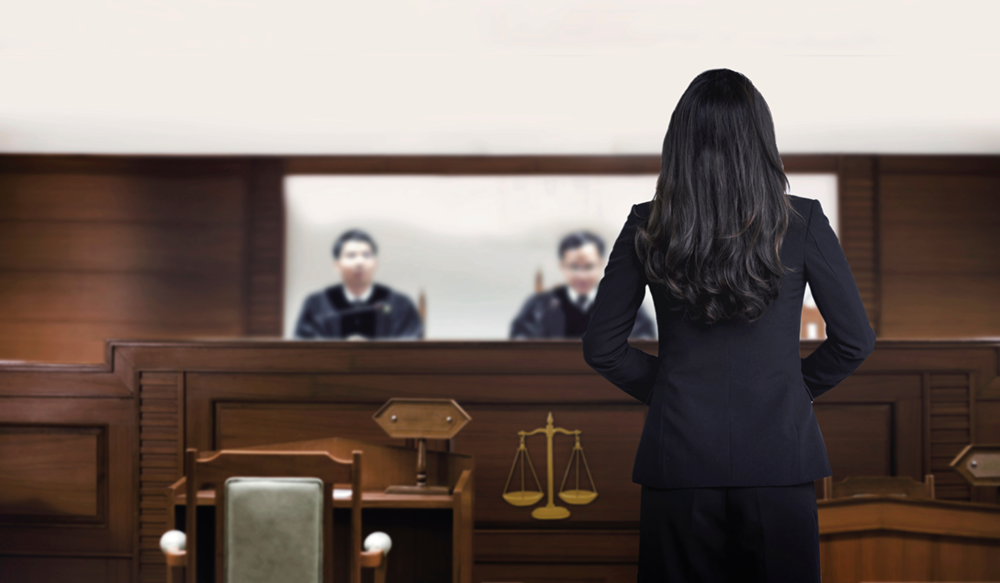From Concept to Courtroom: Steps to Create Powerful and Persuading Trial Presentations
From Concept to Courtroom: Steps to Create Powerful and Persuading Trial Presentations
Blog Article
Browsing the Complexities of Test Presentations: Tips for Seamless Shipment and Compelling Disagreements
In the realm of lawful proceedings, the art of test presentation stands as a critical factor of success. As attorneys browse the intricate internet of courtroom characteristics, the ability to effortlessly deliver disagreements and evidence while mesmerizing the court's interest comes to be critical. The intricacies fundamental in test discussions need a delicate balance of approach, skill, and skill. By refining strategies that guarantee a refined distribution and crafting compelling disagreements that resonate with the audience, attorneys can substantially boost their advocacy. In a world where persuasion rules supreme, understanding the intricacies of trial discussions is not merely a choice yet a need for those looking for to prevail in the courtroom.

Recognizing Test Objectives
To successfully browse a test, it is essential to have a clear understanding of the goals that require to be attained. Prior to entering the courtroom, lawful teams should define their objectives and preferred end results. These purposes offer as guiding principles throughout the trial, shaping techniques and influencing decision-making processes.
Comprehending trial goals includes a detailed evaluation of the instance, lawful criteria, and the customer's benefits. Trial Presentations. It needs a careful exam of the realities, recognizing vital concerns, and expecting prospective difficulties. By setting measurable and specific objectives, lawyers can tailor their disagreements and presentations to straighten with the preferred results
Furthermore, a clear grasp of test purposes allows legal groups to focus on evidence, witnesses, and legal debates properly. It enables the advancement of a coherent story that resonates with the discretionary, enhancing the overall instance presentation.

Organizing Proof Successfully
Having a clear understanding of trial objectives lays the structure for organizing evidence successfully in legal process. By lining up the presentation of proof with the desired end results of the trial, lawful teams can reinforce their debates and improve their persuasiveness.
Another crucial element in arranging evidence successfully is establishing a sensible flow. Offering evidence in a consecutive and systematic way can help develop an engaging narrative that sustains the lawful disagreements being made. In addition, using aesthetic help such as timelines, charts, or charts can further improve the company of proof and assist in clearing up intricate relationships or series of events.
Moreover, ensuring that all evidence provided is permissible and relevant to the instance is important. Pointless or inadmissible proof can detract from the stamina of the debate and possibly damage the trustworthiness of the offering event. Therefore, a precise evaluation and choice procedure must be taken on to include only one of the most legitimately audio and impactful proof in the test discussion.
Crafting Influential Stories
Crafting compelling stories plays an essential duty in offering influential debates throughout lawful proceedings. A well-crafted narrative has the power to captivate the audience, evoke emotions, and ultimately sway the decision for the here and now party. When building a narrative for a trial presentation, it is vital to establish a clear storyline that highlights bottom lines and links them in a meaningful manner. Begin by describing the facts of the case in a compelling fashion, making sure that the series of occasions is very easy to adhere to. Present characters efficiently, offering background details that aids the target market comprehend their activities and inspirations. In addition, integrating vivid summaries and interesting language can bring the story to life, making it much more memorable for the court and court. By weaving together evidence, testament, and legal arguments right into a natural and persuasive narrative, attorneys can successfully advocate for their customers and boost the possibility of a favorable end result in the court.
Understanding Visual Aids
Reliable use visual help is vital to enhancing the effect and quality of trial presentations. Aesthetic aids, when utilized tactically, have the power to simplify complicated details, enhance vital points, and leave a lasting perception on the discretionary. To master visual aids in test discussions, it is essential to make sure that they are clear, succinct, and relevant to the arguments being made.
When integrating aesthetic help, such as graphes, charts, timelines, or pictures, into a trial discussion, it is vital to maintain them aesthetically appealing yet specialist. The visuals should complement the verbal arguments, providing an aesthetic depiction of the info being gone over without frustrating the target market with unneeded details.
Additionally, practicing with the visual aids ahead of time is necessary to make certain a smooth shipment during the trial. Familiarizing oneself with the content, transitions, and timings of each visual aid can assist preserve the flow of the discussion and protect against technological problems that may occur.
Delivering Impactful Closing Arguments
A compelling closing argument acts as the end result of a great post to read trial presentation, enveloping the core story and convincing the judge and court in the direction of a positive decision. To supply an impactful closing debate, it is vital to succinctly wrap up bottom lines, highlight the strengths of your instance, and attend to any type of weaknesses in a critical way. Begin by describing the major disagreements that support your customer's setting, emphasizing why the proof presented throughout the test sustains your story. It is important to produce a sense of communication and clarity, leading the judge and court towards the wanted final thought.
Moreover, incorporating emotional charm can additionally reinforce your closing navigate to this site debate. Inevitably, a well-crafted closing argument should leave a long lasting perception, compelling the judge and jury to rule in your customer's support.
Verdict
In verdict, understanding test discussions entails recognizing purposes, arranging proof, crafting stories, making use of aesthetic help, and providing impactful closing disagreements. By carrying out these methods efficiently, attorneys can offer their instance perfectly and make compelling debates in the courtroom. It is crucial to navigate the complexities of trial discussions with accuracy and ability to achieve success in legal procedures.
By straightening the discussion of evidence with the preferred outcomes of the test, lawful teams can enhance their debates and boost their persuasiveness (Trial Presentations). To grasp visual aids in trial discussions, it is essential to ensure that they are clear, concise, and relevant to the arguments being made
An engaging closing disagreement serves as the conclusion of a trial presentation, enveloping the core story and convincing the court and court in the direction of a favorable decision. Begin by laying out the main disagreements that sustain your client's placement, emphasizing why the evidence offered throughout the trial supports your browse around here narrative.In verdict, mastering trial discussions includes recognizing objectives, organizing proof, crafting stories, using aesthetic aids, and delivering impactful closing disagreements.
Report this page